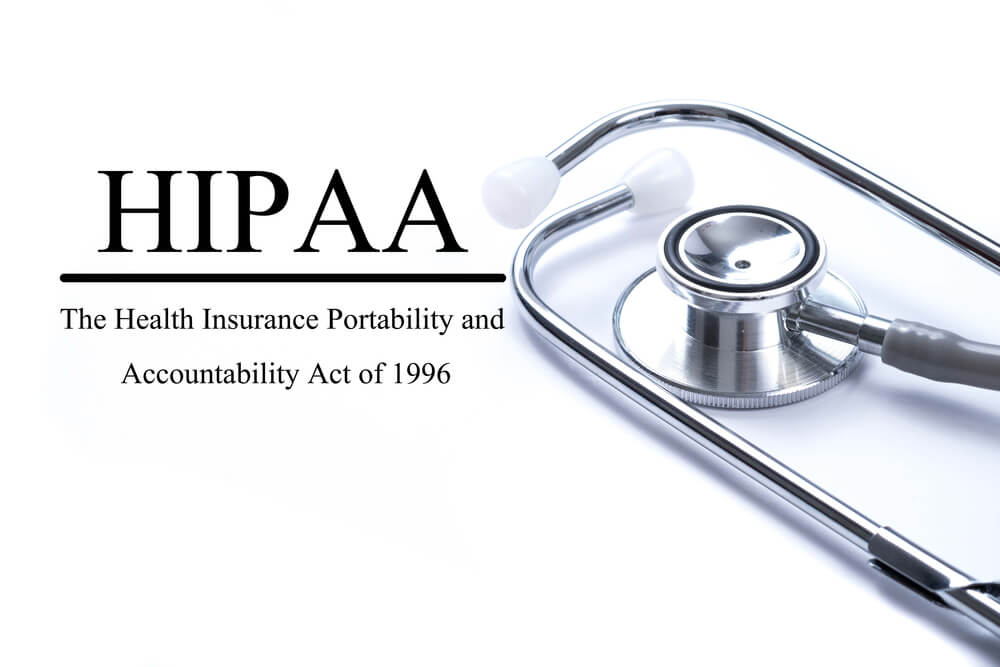
How Content Marketing Can Educate and Engage Patients
Content marketing for healthcare aims to deliver educational information to patients and professionals. Powerful healthcare content marketing strategies allow your content to resonate better with your target audience.
Today we’re going to talk about the role of content marketing in healthcare. We’ll also tackle the different ways content marketing helps patient education and engagement:
 Understanding your audience is crucial in medical content marketing because it lets you address their specific needs. Here are some techniques for understanding:
Understanding your audience is crucial in medical content marketing because it lets you address their specific needs. Here are some techniques for understanding:
 Storytelling is a powerful healthcare marketing tool because your copy creates an emotional connection with patients. It also inspires them to take proactive steps toward better health outcomes.
Here are some points for creating story-centric content:
Storytelling is a powerful healthcare marketing tool because your copy creates an emotional connection with patients. It also inspires them to take proactive steps toward better health outcomes.
Here are some points for creating story-centric content:
 Integrating interactivity into healthcare content is among the best trends to increase audience engagement.
Here are ways to use interactive content effectively:
Integrating interactivity into healthcare content is among the best trends to increase audience engagement.
Here are ways to use interactive content effectively:
 Reviewing ethical considerations in healthcare content marketing is crucial for patient-centric communication. One of the vital regulations is the Health Insurance Portability and Accountability Act of 1996 (HIPAA). HIPAA rules safeguard patient privacy and confidentiality in content creation and distribution.
For instance, write accurate, evidence-based medical information. Use reputable sources and cite certified healthcare professionals to ensure your content is reliable. Avoid fear-based tactics or sensationalism to promote your healthcare content. Instead, focus on providing balanced, informative, and helpful information.
Good healthcare marketing content respects patient autonomy by presenting information without bias. This empowers patients to make informed decisions about their healthcare without undue influence.
Reviewing ethical considerations in healthcare content marketing is crucial for patient-centric communication. One of the vital regulations is the Health Insurance Portability and Accountability Act of 1996 (HIPAA). HIPAA rules safeguard patient privacy and confidentiality in content creation and distribution.
For instance, write accurate, evidence-based medical information. Use reputable sources and cite certified healthcare professionals to ensure your content is reliable. Avoid fear-based tactics or sensationalism to promote your healthcare content. Instead, focus on providing balanced, informative, and helpful information.
Good healthcare marketing content respects patient autonomy by presenting information without bias. This empowers patients to make informed decisions about their healthcare without undue influence.
- Understanding your audience
- Creating educational content
- Engaging patients through storytelling
- Leveraging social media platforms
- Using interactive content
- Measuring content marketing impact
- Reviewing ethical considerations
We’re the top B2B Content Marketing Agency in America. Watch the video below to learn why.
The Role of Content Marketing in Healthcare
Healthcare content marketing helps patients understand various types of medical information. It increases trust when they receive valuable, accurate data about medical topics.1. Brand Awareness
Healthcare service providers use content marketing to improve brand visibility. It helps them reach more people and promotes informed decision-making. Through content marketing, healthcare providers showcase their expertise and the value of their services. They can differentiate themselves from competitors and develop a distinct brand identity.2. Education
Content marketing is a powerful tool in education and awareness. It informs the public about various health-related topics, such as diseases and treatments. It also helps disseminate medical information to assist patients in their healthcare decisions. Well-crafted content empowers patients with knowledge that assists their healthcare decisions. It helps them understand their conditions, treatment plans, and lifestyle choices that positively influence their well-being.3. Community Engagement
Content marketing builds trust and credibility and fosters long-term relationships. Trustworthy content, for example, establishes you as a reliable industry source. This SEO-centered practice also encourages engagement through various channels, such as social media and blogs. Additionally, interactive content, such as discussion forums, creates a sense of community and builds patient support. Good healthcare content marketing gives patients and the community accurate, relevant medical information, strengthening your relationship with them. With the right marketing strategies, it also promotes your services.Understanding Your Audience
 Understanding your audience is crucial in medical content marketing because it lets you address their specific needs. Here are some techniques for understanding:
Understanding your audience is crucial in medical content marketing because it lets you address their specific needs. Here are some techniques for understanding:
- Demographic analysis: Understand your audience’s basic demographics. These include age, gender, location, education level, and income. The information helps tailor content to their specific characteristics and preferences.
- Patient personas: Develop detailed personas for different audience segments. Outline their typical characteristics and use them to create targeted content.
- Healthcare needs and concerns: Identify your audience’s prevalent health concerns, questions, and interests. Conduct surveys and engage in social listening to learn topics that pique their interest.
- Feedback and analytics: Use analytics tools to track how your audience interacts with your content. Monitor engagement metrics, comments, and feedback to understand what content performs well.
- Preferred channels and formats: Determine which channels and content formats your audience prefers. Do your patients like social media platforms or email newsletters? Focus on delivering content through their choices for better engagement.
- Consultation with healthcare professionals: Collaborate with other healthcare professionals to learn about common patient queries and pain points. Their insights can guide the creation of relevant and accurate content.
Creating Educational Content
Creating educational healthcare content requires a balance between accuracy, relevance, and readability. Make your best content with these techniques:- Understand your audience’s healthcare knowledge and preferred topics before creating content. Use surveys and analytics to identify their typical medical questions and concerns.
- Cite accurate and credible sources. Use peer-reviewed journals, reputable healthcare websites, and information from qualified healthcare professionals.
- Use plain language to communicate complex medical concepts or explain technical terms when necessary.
- Experiment with various content formats such as articles, infographics, and videos to cater to different learning preferences and increase engagement.
- Provide actionable advice and practical tips. Empower the audience with information that helps them manage their health or make informed decisions.
- Incorporate real-life patient stories or testimonials where appropriate. Personal narratives make the content more relatable and emotionally engaging.
- Update your content with the latest medical research and advancements. Timely information enhances credibility and relevance.
- Adhere to healthcare regulations and ethical guidelines. Respect patient privacy and avoid making unsubstantiated claims.
Engaging Patients Through Storytelling
 Storytelling is a powerful healthcare marketing tool because your copy creates an emotional connection with patients. It also inspires them to take proactive steps toward better health outcomes.
Here are some points for creating story-centric content:
Storytelling is a powerful healthcare marketing tool because your copy creates an emotional connection with patients. It also inspires them to take proactive steps toward better health outcomes.
Here are some points for creating story-centric content:
- Share real patient experiences with their consent. Highlight their medical journey, especially how they overcame health issues. Authenticity is critical to building trust.
- Use storytelling to evoke emotions and empathy. Show the human side of healthcare by depicting struggles, triumphs, and emotions involved in dealing with medical challenges.
- Craft relatable stories. Address common health concerns or discuss shared experiences with your audience.
- Highlight stories of transformation and hope. Show how healthcare interventions or lifestyle changes positively influence a patient’s life.
- Use multimedia elements such as videos, images, or interviews to complement the story. Visuals add depth and help audiences connect more intimately with the narrative.
- Include educational elements. Explain medical concepts within the story’s context without overwhelming the audience with technical details.
- Develop story series or campaigns focusing on a particular theme or health issue. It keeps the audience engaged and eager to follow the story’s progress.
Leveraging Social Media Platforms
Social media platforms help you share content; each platform works differently and appeals to different target audiences. For example, Instagram reaches a younger audience while Facebook appeals to a broader range of ages. Those on X (Twitter) are more likely to live in cities. The list can go on. Follow some of the points here to make the most of healthcare social media marketing:- Select platforms based on your target audience. Facebook, X (Twitter), and Instagram each cater to different demographics and content formats.
- Share informative and engaging healthcare content. Examples include medical articles and infographics. Ensure their accuracy and credibility.
- Encourage discussions and promptly respond to comments or messages. Engaging with your audience fosters trust and strengthens relationships.
- Visuals are king on social media. Use images and videos to convey healthcare information.
- Use user-generated content (UGC). UGC builds authenticity and credibility through patient testimonials and experiences with your healthcare services.
- Collaborate with influencers aligned in the medical field. Healthcare professionals and patient advocates allow you to reach a wider audience and lend credibility to your content.
- Promote healthcare services, seminars, or workshops through social media. These local SEO techniques attract nearby audiences and encourage participation.
- Post regularly to stay visible and engage your audience. Consistency helps in building a loyal following.
Using Interactive Content
 Integrating interactivity into healthcare content is among the best trends to increase audience engagement.
Here are ways to use interactive content effectively:
Integrating interactivity into healthcare content is among the best trends to increase audience engagement.
Here are ways to use interactive content effectively:
- Health trackers and apps: Develop or promote apps such as fitness goals and medication schedules for tracking purposes. These platforms offer practical tools for patients to manage their health.
- Virtual tours and simulations: Offer virtual tours of medical facilities or interactive maps for finding healthcare providers. They help familiarize patients with healthcare environments or processes.
- Quizzes and assignments: Create health quizzes or assessments. They help users understand medical information or test their knowledge.
- Interactive tools and calculators: Develop tools such as body mass index calculators, calorie counters, or risk assessment tools. These provide personalized information and encourage users to actively manage their health.
- Interactive infographics or videos: Create interactive infographics or videos that allow patients to explore the content. They provide an immersive learning experience.
- Personalized content and recommendations: Use data collected from patient interactions to customize content.
- Games and challenges: Develop health-related games or challenges that motivate users. They educate patients about specific health issues in entertaining ways.
Measuring Content Marketing Impact
Measuring a content marketing’s impact involves assessing various metrics. The information provides insights into the effectiveness of your efforts. Here are some content measurement strategies to follow:- Monitor website traffic, page views, and time spent on healthcare content. Analyze user behavior, such as bounce rates and click-through rates.
- Track conversions such as appointment bookings or newsletter sign-ups. They indicate how well the content motivates action.
- Analyze engagement metrics on social media platforms, such as likes, shares, comments, and click-through rates. Assess how the content resonates with the audience on different channels.
- Measure the content’s influence on search engine rankings. Track keyword rankings, organic traffic growth, and the number of backlinks the content generates.
- Assess the number of inquiries and consultations generated by the content. These leads indicate the copy’s influence on patient engagement.
- Monitor brand mentions, sentiment analysis, and brand sentiment shifts related to your healthcare content. They gauge brand perception.
- Track health outcomes or behavior changes resulting from educational content. A good example is how the copy improves patient adherence to treatment or inspires lifestyle changes.
Reviewing Ethical Considerations
 Reviewing ethical considerations in healthcare content marketing is crucial for patient-centric communication. One of the vital regulations is the Health Insurance Portability and Accountability Act of 1996 (HIPAA). HIPAA rules safeguard patient privacy and confidentiality in content creation and distribution.
For instance, write accurate, evidence-based medical information. Use reputable sources and cite certified healthcare professionals to ensure your content is reliable. Avoid fear-based tactics or sensationalism to promote your healthcare content. Instead, focus on providing balanced, informative, and helpful information.
Good healthcare marketing content respects patient autonomy by presenting information without bias. This empowers patients to make informed decisions about their healthcare without undue influence.
Reviewing ethical considerations in healthcare content marketing is crucial for patient-centric communication. One of the vital regulations is the Health Insurance Portability and Accountability Act of 1996 (HIPAA). HIPAA rules safeguard patient privacy and confidentiality in content creation and distribution.
For instance, write accurate, evidence-based medical information. Use reputable sources and cite certified healthcare professionals to ensure your content is reliable. Avoid fear-based tactics or sensationalism to promote your healthcare content. Instead, focus on providing balanced, informative, and helpful information.
Good healthcare marketing content respects patient autonomy by presenting information without bias. This empowers patients to make informed decisions about their healthcare without undue influence.
Ready To Boost Your Healthcare Content Marketing?
Healthcare content marketing educates patients by providing reliable information that empowers them to make informed decisions. It also engages the audience through relatable, interactive content that addresses their health concerns and encourages active participation in their well-being. Interested in implementing these content marketing tips for your healthcare services? Contact Digital Authority Partners (DAP) today and see how we can help you.Want To Meet Our Expert Team?
Book a meeting directly here



